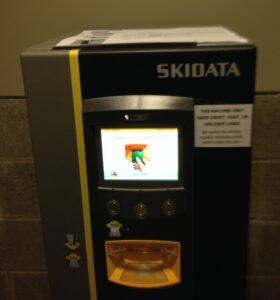The selfie culture and our desire to photo-document every aspect of our lives has started to influence healthcare as well, and patients want to be able to record their doctors visits. The concept is so prevalent that it’s making headlines in the mainstream media.
“Patients Press the Record Button, Making Doctors Squirm” from the Washington Post
The selfie culture and our desire to photo-document every aspect of our lives has started to influence healthcare as well, and patients want to be able to record their doctors visits. The concept is so prevalent that it’s making headlines in the mainstream media.
“Patients Press the Record Button, Making Doctors Squirm” from the Washington Post
“Why You Should Record Your Doctor’s Visits” from Forbes.
Having a recording of a visit ensures that you don’t miss any information, and you can review it when you get home and are able to provide more attention to the topic. Much of what is said in a doctors visit is missed by patients, by some accounts between 40 and 80% is missed, and an additional half of that information is remembered incorrectly. As we learned during a course from the Institute for Healthcare Improvement, often healthcare providers are not trained in making sure the message is received.
When we ask patients about their experiences, they tell us that they thought they understood the instructions but realized when they got home they really didn’t retain enough or understand enough to comply with the instructions. Patients are often intimidated by healthcare personnel, worried about wasting valuable visit time with questions, or worrying about how what their being told will impact their lives, for example, who will walk my dog when I have my hip replaced? Is it any wonder that the information isn’t landing?
When handout instructions are available, they are often forgotten by patients, or confusing. One healthcare organization we work with conducted an audit of all their patient handouts and discovered that they were at an 18th grade reading level. The recommended reading level for health information is fifth grade, and yet these instructions required a graduate degree!
Patients have a seemingly simple solution to this: record their doctors. Doctors on the other hand have been warned about PHI and HIPAA, so a common ‘workaround’ is to record patients on their own phones. Legal departments hate this because then the patient has a copy of their prescribed instructions but the health system does not. Liability aside, it doesn’t result in good care if everyone is not working off the same information.
Including patient video as part of a HIPAA compliant digital treatment plan is a great way to solve this problem. Patients have a better experience and the health system is able to keep good records.
Patient video can cueing or instructions that is unique to that patient, and they show the patient’s actual experience whether that’s in wound care, using a medical device, or physical therapy. Patients feel a greater sense of connection and accountability to care plans when they are personalized and customized.
For complex instructions like wound care, using medical devices and durable medical equipment, and physical and occupational therapy, patients feel more confident that they can repeat the exercise or instructions at home when they see video of themselves doing it.
There are so many benefits to including custom video as part of a patient’s care plan. The technology is here today, it can be delivered in a HIPAA compliant manner, and it can be stored and easily retrieved. The challenge is that while patients are ready for this, health systems aren’t and the answer is often ‘no’. The risks to the health system, if video is delivered as part of an overall digital patient treatment plan solution are low, but the potential benefits to care are large.
We’ve tracked the evolution of the ‘consumerization of IT’ through other industries. Some have said it can never happen in healthcare, but this is a great example where patients starting to push the envelope and use technology in their care. Let’s hope they are able to convince their doctors as well.
